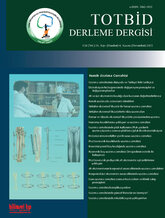
Congenital anomalies of the lower extremity represent a heterogeneous group of developmental disorders that lead to significant limb shortening and functional limitations. Conditions characterized by partial absence or underdevelopment of the limb-such as congenital femoral deficiency (CFD), tibial hemimelia, and fibular hemimelia-as well as skeletal dysplasias such as achondroplasia, which cause limb shortening, fall within this classification. Their treatment often requires multiple surgical interventions ranging from amputation to reconstructive procedures. In the past, amputation and prosthetic fitting were considered the mainstay of treatment; however, with advancements in distraction osteogenesis techniques, limb-salvage reconstruction has become the modern standard of care. The aim of this review is to summarize the embryologic foundations, clinical features, classification systems, and surgical management options of major congenital lower limb anomalies, with particular emphasis on limb-lengthening procedures. The incidence of congenital femoral deficiency is approximately 1 per 100.000 live births, while tibial hemimelia occurs in about 1 per 1.000.000 live births. Fibular hemimelia is the most common long bone deficiency, with a reported incidence of 7.4-20 per 1.000.000 live births. Achondroplasia, the most prevalent skeletal dysplasia worldwide, results from a fibroblast growth factor receptor 3 (FGFR3) gene mutation and is characterized by rhizomelic limb shortening. It is frequently associated with psychosocial challenges, making staged, multi-segment lengthening surgeries a common therapeutic approach. Using modern techniques, cumulative length gains exceeding 20-30 cm can be achieved. However, joint contractures, hip subluxation, pin tract infections, and regenerate fractures remain frequent complications, often necessitating a multidisciplinary treatment approach. Today`s lengthening and reconstruction strategies allow for functional limb preservation with length equalization in congenital lower limb discrepancies. Early diagnosis, accurate classification, and individualized surgical planning are essential for optimizing long-term functional outcomes and quality of life.